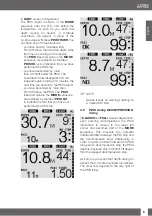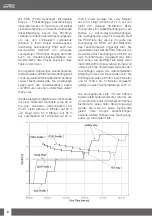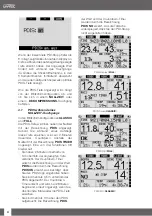
1
TABLE OF CONTENTS
1.
Introduction to PDIS (Profi le-Dependent Intermediate Stop) .............................1
2. How does PDIS work? ............................................................................................3
3. Special considerations when diving with more than one
gas mixture (PMG) ..................................................................................................3
4. Diving with PDIS .....................................................................................................3
4.1
PDIS during NO STOP diving ...................................................................4
4.2
PDIS during DECOMPRESSION diving ....................................................5
4.3
PDIS during dives with MB levels .............................................................6
Glossary
PDIS:
Profi le-Dependent Intermediate Stop. This refers to the concept of
introducing an intermediate stop during an ascent.
PDI stop:
This refers to the actual stop itself and the depth at which it is to be carried out.
1.
Introduction to PDIS (Profi le-Dependent Intermediate Stop)
The main purpose of a dive computer is to track your nitrogen uptake and recommend a
safe ascent procedure. Diving within the so called no-stop limits means that at the end of
the dive you can ascend directly to the surface, albeit at a safe ascent rate, while for dives
outside of the no-stop limit (so-called decompression dives), you must perform stops at
certain depths below the surface and allow time for excess nitrogen to be expelled from your
body before fi nishing the dive.
In both cases, it can be benefi cial to stop for a few minutes at an intermediate depth between
the maximum attained depth during the dive and the surface or, in case of a decompression
dive, the fi rst (deepest) decompression stop.
An intermediate stop of this kind is benefi cial as soon as the ambient pressure at that depth
is low enough to ensure that your body is predominantly offgassing nitrogen, even if under a
very small pressure gradient. In such a situation, you can still cruise along the reef and enjoy
the dive, while your body gets a chance to slowly release nitrogen.
In recent times, so called “deep” stops have been introduced in some dive computers and
tables, defi ned as half the distance from the maximum reached depth and the surface (or
the lowest decompression stop). Spending 2 or 15 minutes at 30m/100ft would result in the
same deep stop of 15m/50ft.
English
Summary of Contents for GALILEO
Page 1: ......
Page 2: ......
Page 9: ...English ...
Page 10: ......
Page 11: ......
Page 12: ......
Page 19: ...Deutsch ...
Page 20: ......
Page 21: ......
Page 22: ......
Page 29: ...Español ...
Page 30: ......
Page 31: ......
Page 32: ......
Page 39: ...Français ...
Page 40: ......
Page 41: ......
Page 42: ......
Page 49: ...Italiano ...
Page 50: ......
Page 51: ......
Page 52: ......
Page 59: ...7 Nederlands ...
Page 60: ......




































